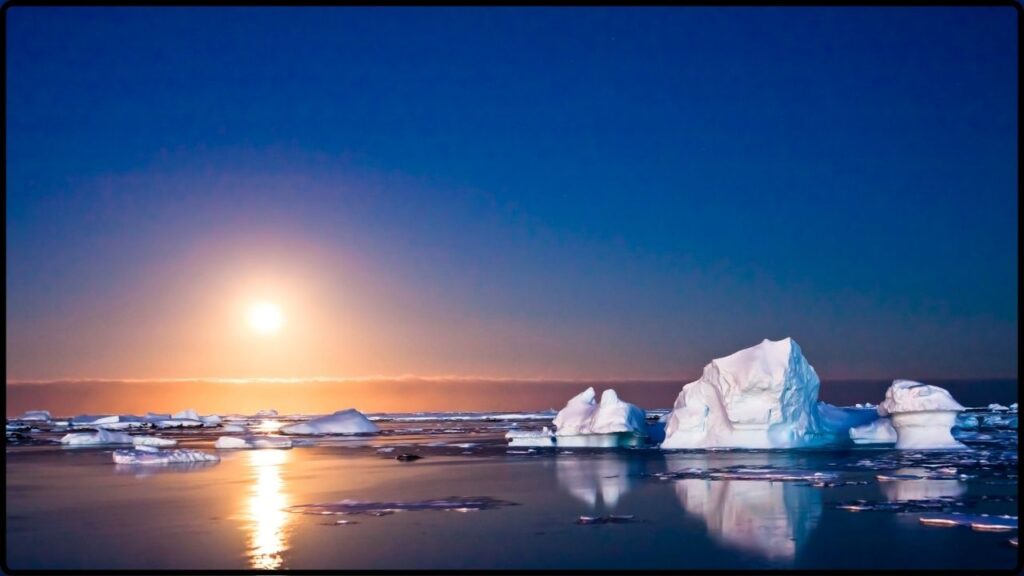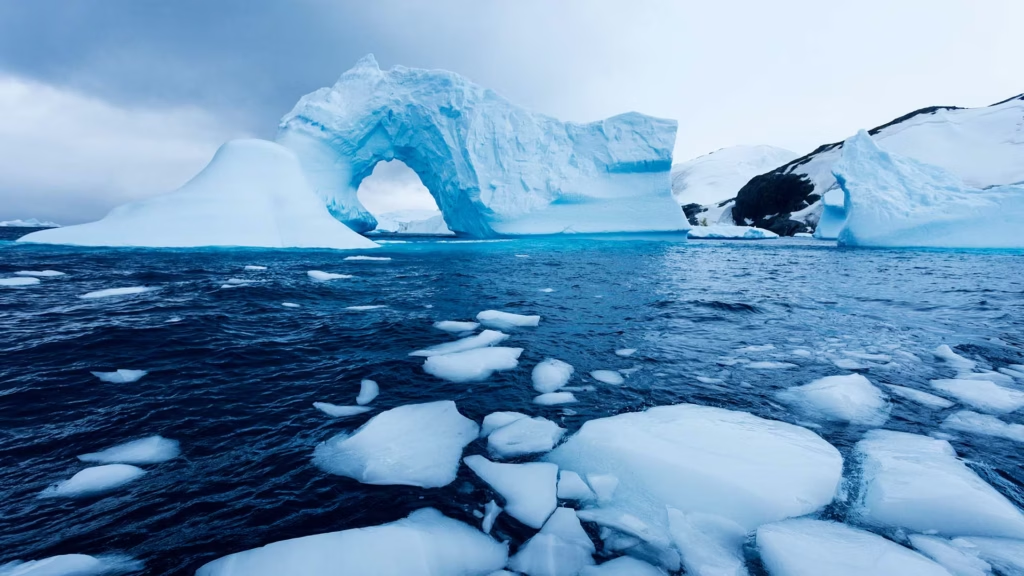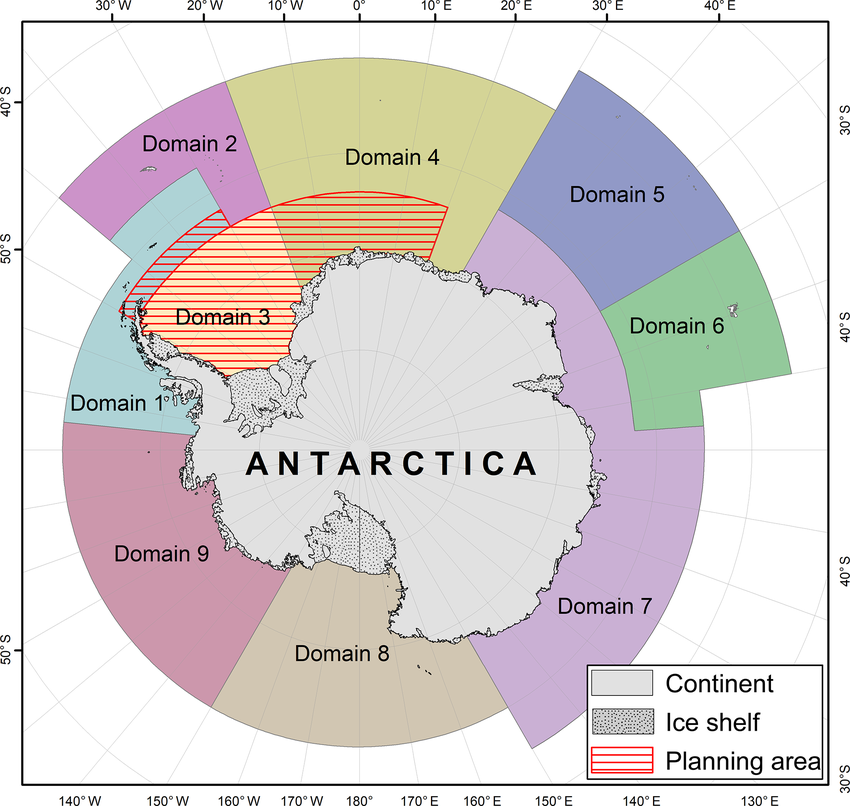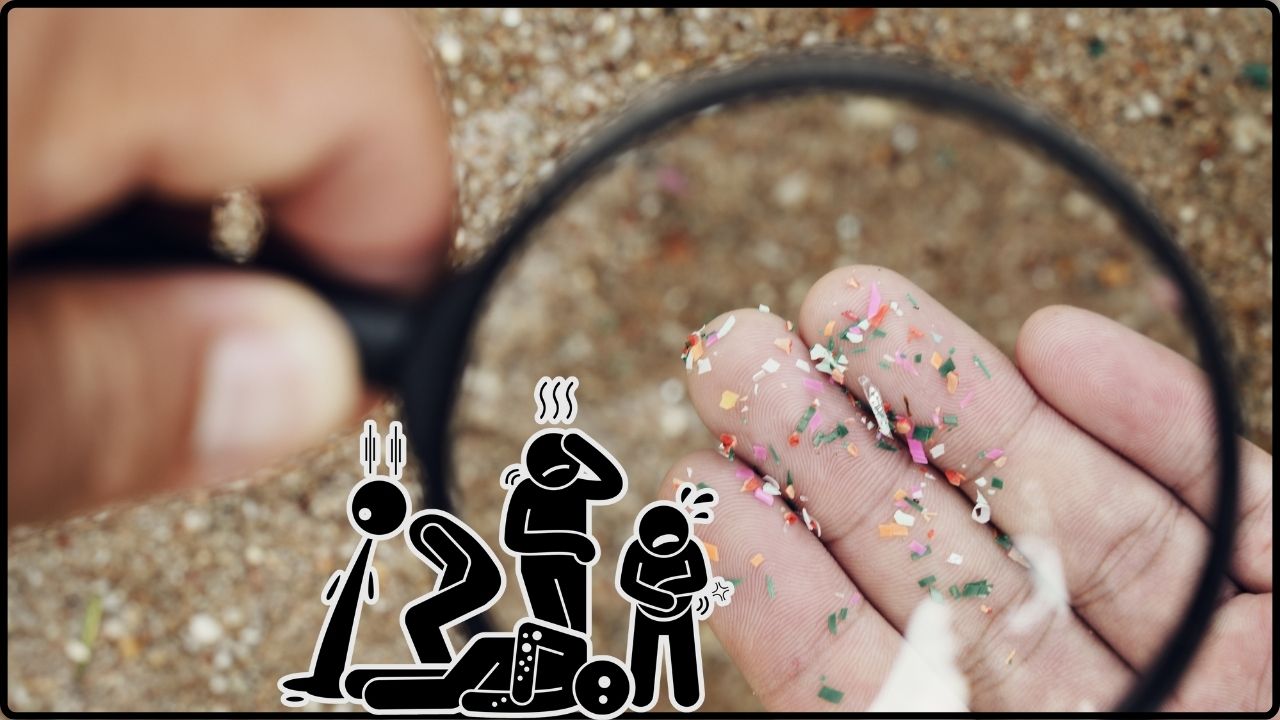
Culprit Behind Antarctica’s Ecosystem Collapse: When we think about the environmental crisis in Antarctica, the image that usually pops into mind is melting glaciers, stranded penguins, or news clips of icebergs the size of cities breaking off into the sea. But what if we told you the real driver behind Antarctica’s ecological breakdown isn’t towering ice, but a tiny crustacean no bigger than a paperclip?
The quiet, unassuming Antarctic krill may be the most crucial creature you’ve never heard of—and its dramatic population collapse is threatening to unravel one of the most fragile ecosystems on Earth. This isn’t just a wildlife concern—this is a climate and global stability issue.
Culprit Behind Antarctica’s Ecosystem Collapse
Antarctica’s ecosystem is teetering on the edge—not because of something massive, but because of the disappearance of something so small it’s often overlooked. Krill might not be cute or cuddly. But they’re critical. They feed penguins, power whales, and pull carbon from the sky. Without them, our oceans—and our climate—begin to fail. The good news? We’re not powerless. With smarter regulations, better consumer choices, and a little awareness, we can give krill (and the world) a fighting chance.
| Topic | Details |
|---|---|
| Main Culprit | Antarctic krill (Euphausia superba) collapse due to climate change and overfishing |
| Biomass Decline | Up to 80% decrease since the 1970s |
| Primary Threats | Warming oceans, sea ice loss, industrial krill fishing |
| Consequences | Starving penguins and whales, weakened carbon sink, biodiversity collapse |
| Fishing Nations | China, Norway, South Korea, Russia, Japan, Ukraine |
| Regulatory Body | CCAMLR – Commission for the Conservation of Antarctic Marine Living Resources |
| Consumer Tip | Avoid krill-based supplements and krill-fed seafood |
| Official Site | www.ccamlr.org |
What Are Krill, and Why Do They Matter?
Antarctic krill are small, shrimp-like crustaceans that form massive swarms, sometimes stretching hundreds of kilometers. These creatures feed on microscopic algae that bloom beneath sea ice and, in turn, are eaten by nearly every major Antarctic predator: whales, penguins, seals, squid, and fish.
Krill are so abundant that, collectively, they outweigh the global human population—or at least they used to. Their dense swarms support not only Antarctic wildlife but also global food chains and carbon cycling systems.
Here’s the kicker: krill are responsible for sequestering millions of tons of carbon dioxide each year. They eat near the ocean’s surface and excrete waste that sinks to the seafloor, pulling atmospheric carbon with it. This process, known as the biological pump, is critical for regulating Earth’s climate.
Krill and Indigenous Stewardship of Nature
In many Native American cultures, there’s a deep respect for the balance of life—an understanding that every being, no matter how small, plays a role in the larger web of existence. Krill are a perfect example of this wisdom. Seemingly insignificant, they hold up an entire continent’s food web.
This respect for balance, echoed in Indigenous teachings, reminds us that when we lose even the smallest creature, the ripple effect can be vast and devastating.

Why Are Krill Populations Collapsing?
1. Climate Change and Sea Ice Loss
Krill depend on sea ice to reproduce. Algae that grow underneath the ice provide food for krill larvae. But as global temperatures rise, sea ice forms later in the season and melts earlier—leaving krill without the nursery habitat they need.
- According to the National Snow and Ice Data Center, Antarctic sea ice hit a record low in 2023, shrinking below 1.8 million square kilometers.
- Studies show that a 1°C increase in ocean temperature could reduce krill habitat by 30% by the end of the century .
The result? Entire generations of krill are being lost before they mature.
2. Industrial Overfishing
You might not see krill on your dinner plate, but their harvest fuels a massive industry. Krill are caught in bulk to create:
- Fishmeal for farmed salmon and shrimp
- Krill oil supplements for humans
- Pet food ingredients
Krill fishing has increased more than fivefold since 2007, with annual catches nearing 500,000 metric tons. Some companies use advanced trawlers that vacuum entire swarms, including juveniles and larvae. These methods prevent future replenishment of the population and leave little behind for wildlife.
Ripple Effects Across the Food Web
The disappearance of krill isn’t happening in a vacuum. It’s triggering a chain reaction through the Antarctic ecosystem—and beyond.
Penguin Populations in Decline
Species like the Adélie and Chinstrap penguins rely heavily on krill during breeding season. Without enough food, parents can’t nourish their chicks, and population numbers plummet.
- In the Antarctic Peninsula, some colonies have declined by over 75% since the 1970s.
Whale Recovery in Jeopardy
Blue, fin, and humpback whales—once hunted to near extinction—are now facing a new obstacle: starvation. These massive mammals eat up to 4 tons of krill a day.
Now, with fewer krill and more commercial boats, scientists worry that whales won’t recover fully despite decades of protection.
Collapsing Carbon Capture
Krill play a vital role in capturing carbon. With fewer krill, less carbon is transported to the ocean floor, leaving more CO₂ in the atmosphere.
This creates a feedback loop: warming oceans hurt krill → fewer krill mean more carbon stays in the air → climate change worsens.

The Global Impacts: Why the Culprit Behind Antarctica’s Ecosystem Collapse Affect Everyone
This isn’t just an Antarctic problem. The loss of krill has economic, environmental, and public health consequences worldwide.
- Food security: Fish farms rely on krill meal. Prices of seafood could rise as supplies shrink.
- Oxygen production: The Southern Ocean helps produce over 50% of the world’s oxygen. Disruption there affects global air quality.
- Biodiversity: With declining krill comes the risk of losing not only Antarctic species but also migratory birds and fish that depend on them indirectly.
Can We Save Krill? Absolutely—Here’s How
1. Reinforce Global Protections
The Commission for the Conservation of Antarctic Marine Living Resources (CCAMLR) is responsible for regulating krill fishing. But enforcement is weak, and China and Russia have repeatedly vetoed stronger protections.
We need international pressure to:
- Ban fishing during critical breeding seasons
- Establish no-fishing zones in biodiversity hotspots
- Expand Marine Protected Areas (MPAs)

2. Consumer Power: Rethink What You Buy
Check the labels of:
- Omega-3 supplements
- Pet food
- Farmed fish products
If it contains krill oil or krill meal, opt for alternatives like:
- Algae-based omega-3s
- Sustainable fish feed
- Insect protein or plant-based pet food
3. Support Organizations Making Change
Groups like Greenpeace, WWF, and Sea Shepherd are actively campaigning to reduce krill fishing and protect Antarctic waters. Donations, volunteering, or sharing their message helps boost public awareness and political will.
4. Use Education as a Tool
Teachers can make krill a part of STEM learning:
- Krill dissection kits
- Ocean carbon cycle experiments
- Antarctic ecosystem food web posters
Students learn not just science—but systems thinking, showing how one species connects to many others.
It’s Official: NASA Just Confirmed What the Oceans Really Look Like from Space
Nature’s Petrifying Secret: Tanzania’s Lake That Mummifies Animals in Its Deadly Waters
Vietnam’s Deep Secret Revealed: Rare New Sponge Species Discovered After Centuries











